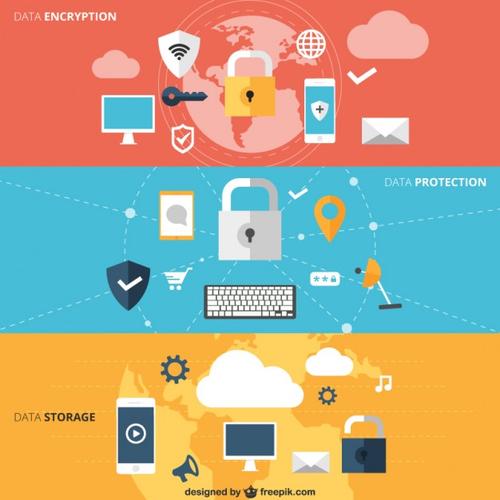A cybersecurity expert warns of the hacking problems to brace against next year.
October 10, 2016
Paying for purchases with cash. Who does that anymore? Parallel parking your own car? Just buy one that does it for you. As technology advances, so does our desire to use technology in every aspect of daily life. From mobile payment platforms to self-driving vehicles, technological advancements have begun to replace human methods. But these advancements don’t come without downfalls, especially when it comes to cybersecurity.

(Source: freepik)
Technological advances aren’t exclusive to conveniences. As companies continue to develop methods to make our lives easier, hackers continue to develop more sophisticated ways of stealing our information and our money.
Here’s what you should be watching out for in 2017:
1.) Information Theft — The act of information theft isn’t new, but the methods hackers are using to steal information are only becoming more sophisticated. Information theft is not something to be taken lightly in 2017. In fact, in 2015, over half a billion personal information records were stolen from companies. And these are large companies with cybersecurity measures in place. It used to be that shredding your mail before you threw it in the trash was the best way to prevent your information from being stolen. But with the rise of technology and the prominence of the Internet, it just isn’t that simple anymore.
2.) Hacks of Mobile Payment Systems — With Apple Pay, Google Wallet, and other mobile payment systems, consumers don’t even need to carry their wallets in order to make transactions, which is great for malware authors who want to steal funds. But you don’t only need to be concerned about your personal account. Hackers who have learned to attack mobile payment methodsmay use that knowledge to tap into corporate networks.
3.) Chip-and-PIN Card Attacks — If you don’t have one already, it’s only a matter of time before your bank sends you a chip-and-PIN card. Chip-and-PIN were developed as an attempt to thwart data theft and provide consumers with a more secure way to make transactions. Each card has a chip that proves it is a legitimate bank card and generates a one-time transaction code with each purchase. But while chip-and-PIN cards help prevent in-store purchase fraud they can’t do much for online purchases. According to Wired, we can expect phone and online card fraud to increase this year.
4.) Cloud Hacks — For a while in 2016 it seemed like you couldn’t watch the news without hearing about cloud hacks — from celebrities’ cell phones to major corporations’ data storage. And unfortunately, in 2017, cloud hacks will still be a major issue. Hacking into the cloud simply isn’t as difficult as you would think. And even for cloud storage with extensive security measures in place, hackers have developed malware and mobile apps that make stealing private information relatively simple.
5.) Extortion Hacks (cyber shakedowns) — For hackers that don’t feel like taking the time to use the data they steal from major corporations, extortion hacks or cyber shakedowns are the new trend. And we’re not talking about the type of cyber shakedown that locks you out of an account until you pay a ransom. We’re talking about threatening to release data from major corporations unless a ransom is paid. Remember Ashley Madison, anyone? The problem with these attacks (other than the obvious) is that if demands are not met, company secrets can be exposed, resulting in lawsuits and lost jobs, and if demands are met, hackers still have access to sensitive data.
READ MORE ARTICLES ON CYBERSECURITY:
How Companies Can Protect Themselves
Hackers are going to continue to look for new ways to extort and steal information from businesses and organizations, which unfortunately means those businesses and organizations will have to continue to look for new ways to protect themselves.
The best place to start is with your security policies. Make sure your entire company is aware of what security policies are in place and update them on any new security policies you will be implementing. You should also take a look at each area of vulnerability in your company and determine what you can do to make those areas more secure. For example: If your employees use email to share sensitive documents and data, consider implementing a file sharing platform that emphasizes security features.
Adrian Phillips leads product marketing for Citrix ShareFile. With a diverse career dating back to the dot-boom era, his passion is helping customers transform the way they work by using cloud-based technologies. Striving to live a paperless life in Raleigh, N.C., Adrian holds a bachelor’s degree in journalism.
You May Also Like



